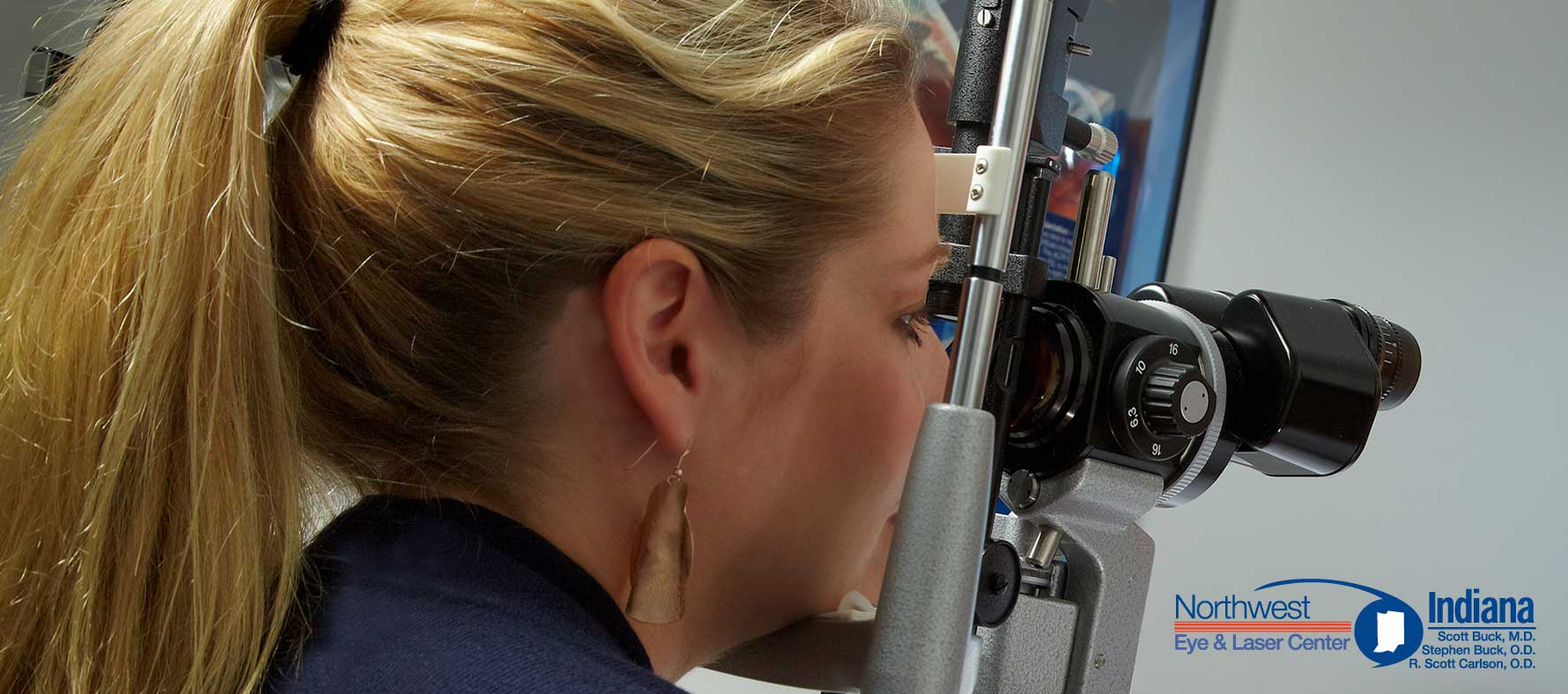
Scratched Cornea - Corneal Abrasion
The eye doctors at Northwest Indiana Eye & Laser Center provide examination, diagnosis and treatment of corneal abrasion or scratched cornea for patients of all ages. A scratched cornea or corneal abrasion is the result of the outermost layer of the Cornea-called the corneal epithelium-being torn away from the underlying layers. A scratched cornea or corneal abrasion is one of the most common injuries to the eye. It is possible to get a corneal abrasion if you are poked in the eye with a finger, a tree branch or from shards of glass in a car accident. The cornea has many nerve endings and is thus very sensitive making a scratched cornea a potentially painful experience. Fortunately, smaller corneal abrasions usually heal quite quickly-often within 24 hours-or during sleep. Larger corneal abrasions make take 2 or 3 days to fully heal. However, during the healing time patients often experience tearing, redness, blurred vision and light sensitivity. Sometimes, we may need to treat a corneal abrasion by applying a thin soft bandage contact lens or even a tight patch to prevent the eyelids from moving over the damaged area. If you are more than a little uncomfortable it is also possible that we will prescribe a pain reliever tablet to be taken by mouth to make you more comfortable. Typically, we may also prescribe an antibiotic eye drop in order to prevent an infection.
As part of your examination in the office we will instill some anesthetic eye drops to ease the pain and make the examination more comfortable for you. However, we do not prescribe anesthetic eye drops for repeated use as they can actually harm the eye and lead to even further damage. While the larger, deeper abrasions can take a few extra days to heal you should be aware that if you follow our instructions for treatment it is very unusual to have vision loss from a corneal abrasion alone. One note of caution is that it is important NOT to rub your eyes while they are healing from a scratched cornea as it takes time for the newly healed layer of cells to adhere firmly to the underlying layers of the cornea. This new layer of cells is a bit fragile and can be rubbed off if you are not careful.
In some instances, long after an abrasion has healed it can recur spontaneously, often upon awakening in the morning. This is called Recurrent Erosion and represents an area of the epithelium that is not re-connected well to the deeper parts of the cornea.
The treatment is similar to that for the abrasion. If the Recurrent Erosion is not stable in its healing sometimes the surface of the cornea is treated with a procedure called Phototherapeutic Keratectomy using an Excimer Laser in order to help form better connections between the corneal layers. Extended use of bedtime ointments or lubricants may also help in preventing recurrent erosions.